2022 Lexus NX First Drive Review: See Ya Later, Touchpad
FAST FACTS
| Engine: | 2.5L I4 (NX 250) / 2.4L I4 Turbo (NX 350) |
| Output: | 203 hp, 184 lb-ft / 275 hp, 317 lb-ft |
| Transmission: | 8AT, FWD/AWD |
| US fuel economy (MPG): | 26/33/28 (250 FWD) / 25/32/28 (250 AWD) / 22/29/25 (350) |
| CAN fuel economy (L/100KM): | 9.4/7.4/8.4 (250 AWD) / 10.7/8.1/9.5 (350 AWD) |
| Starting Price (USD): | $39,025 (inc. dest.) |
| As-Tested Price (USD): | $47,725 (inc. dest.) |
| Starting Price (CAD): | $49,515 (inc. dest.) |
| As-Tested Price (CAD): | $60,115 (est, inc. dest.) |
“Lethargic performance is the price you pay for the solidity and economy this vehicle offers.”
-Craig Cole, Autoguide, 2016
To correct my esteemed colleague: many thousands of dollars is the price you pay for the solidity and economy of a Lexus NX. Lexus is not the first brand to be associated with things like excitement, driving pleasure, history or character. As Toyota’s premium badge, it is associated with reliability, build quality and safety…but it’s 2021 and so is just about every other leading brand.
Get a Quote on a New Lexus NXLexus has spent the last decade trying to shake that image. Lexus models used to be developed by independent engineers and teams working on individual models and the result, says Lexus Marketing VP Vijay Shahani, was “a bunch of different vehicles that felt different … there was no cohesive driving signature.” To change this, behold the “Lexus Driving Signature,” whose acronym LDS should play well in the Utah market.
LDS is one of four pillars that will support “a global standard for performance driving.” The other three are leading-edge design, vehicle electrification (Lexus will have 10 “electrified” vehicles in its lineup within four years) and advanced technology. As car people, of course, LDS is what we’re interested in, and Shahani promised us it would be the sweet spot between refined ride quality, quiet, responsive, linear control and exceptional handling, grip and confidence. Okay. So how has the NX line, now into its seventh year, been changed to reflect this?
SEE ALSO: 2022 Lexus NX 450h+ First Drive Review: Plugged-In Progress(Editor’s Note: Gabe drove the whole 2022 NX lineup, though this story focuses on the gas-only models. Our editor Kyle took part in the NX 450h+ plug-in hybrid first drive up in Canada shortly after.)
What’s new?
Lexus really delivers when it comes to a major upgrade—this is an entirely new car, based on the Toyota TNG platform. This allows the new NX to be bigger, with 14 percent more cargo room, but also lighter: the hybrid is 210 pounds (95 kilograms) less than the outgoing NX300h.
The styling isn’t groundbreaking, but it achieves what the designers set out to do—update the looks while still looking like a Lexus. It’s swoopy without being a jellybean, crisp but not bosozoku, overall very mature and tasteful, with nice proportions. My only criticism is that aside from the humongous spindle grille and new all-caps logo on the back hatch (below the cool full-length lightbar), it’s pretty anonymous—it could be any mid-sized SUV.
The powertrains are the big news. The outgoing model had two, a 2.0-liter turbo-four making 235 hp and a 2.5-liter Atkinson-cycle four-pot hybrid netting 194 hp. Now you can choose from four different four-cylinder engines—a 2.5-liter with 203 hp, a 2.4-liter turbo making 275 hp, a 2.5-liter Atkinson hybrid producing 240 hp and a plug-in hybrid 2.5-liter—the first ever for Lexus—with 304 total system hp, substantial power gains to go with the extra room and less weight. The PHEV has a big 18-kWh lithium-ion battery and offers 37 miles (60 kilometers) of EV range, with the option of running it on “EV-only mode” or “Hold” mode to save the electrons for later use.
Tech and features
We all love our gadgets and luxury features, and now you’d be hard-pressed to name a feature Lexus doesn’t offer on the NX. I could write a long description of all of them, but in the interest of brevity, I’ll focus on two things.
The first is the elephant in the CUV, the awful touchpad control for the infotainment system in the outgoing NX. Zach Doell at US News and World Reports had to come up with seven synonyms for “bad” to describe it, one for each model year.* “We know it had room for improvement,” understated Shahani, but he claimed the new touchscreen-based (9.8-inch is standard, the premium models get a 14.0-incher) system “will put us ahead of the pack.”
He could be right—not only is the system responsive, humanely designed and logical, it utilizes a cloud-based AI to perform all sorts of tasks, from playing music to opening the door to turning on the wipers. A user can even go from Lexus to Lexus and the system will replicate their preferred setup in each car. There’s also wireless charging as well as wireless Apple CarPlay and Android Auto.
The other big deal is the updated Lexus Safety System+. The alphabet soup of safety features gets even more crowded in version 3.0, which to the list of familiar safety features like lane-departure alerts and dynamic cruise control adds daytime motorcycle detection, pedestrian detection, intersection assistance, emergency steering assistance, “risk avoidance emergency steer assist” and acceleration suppression at low speed. The hybrid models have available parking assist, which can automatically pull into (and out of) parallel or perpendicular spaces when summoned.
SEE ALSO: Mercedes-AMG GLB 35 vs Mercedes-Benz GLC 300 ComparisonOn the road
For the driving event, in the posh surroundings of Scottsdale, Arizona, we were given the chance to drive the 15-plus LX variants available to consumers. Because I am but one person and we only had so many hours, I wasn’t able to drive everything, but I think I got a good feeling for the line.
It should be no surprise that these cars are nice to drive. They share a lot of underpinnings with the RAV4, but they are not just tarted-up Toyotas. The ride quality is impressive, and the handling is manageable and predictable. Obviously the F-Sport models have tauter, more controlled rides and less body roll, but even so, you won’t mistake these for sport-performance sedans. The non F-Sports have that soft, squashy feel big-car fans know and love, with noticeable body roll.
SEE ALSO: 2021 Lexus LC 500 Coupe Review: Exquisite Express“She’s a big girl,” I noted while driving, “but I like driving this car.” It’s not a sports car, sure, and it quickly gets out of sorts if you push it too hard, but I felt very safe in it, and its Toyota heritage showed in the way it felt so familiar and easy to drive—no surprises. The brakes are strong and progressive, the safety electronics work well and all the tech is easy to figure out.
Living with it should be easy, too. The cargo space is great, the seats fold almost flat, there are plenty of USB ports and cupholders and run-flat tires mean you shouldn’t ever be stranded. Rear seat passengers will appreciate decent leg and headroom, as well as armrests and cupholders.
Powertrain and fuel economy
All the powertrains in the lineup were acceptable for daily driving, and the hybrid and turbo were big improvements over the outgoing model. The turbo is the one I’d want in my garage—it’s just the most fun, with lots of power and good sounds and feels. If you told me it was a V6 I’d have believed you. Its combined economy is 25 mpg; not bad for a big, fast all-wheel-drive crossover.
The hybrids were acceptable, though they felt laggy—blame the CVT, perhaps, but more testing is in order. The PHEV was okay, more sluggish than the straight hybrid—it’s a big battery for a PHEV—but the “EV-only” mode has a very low threshold and the gas engine kicks in at relatively low RPM, making it challenging to drive all-electric. The NX 350h should turn in EPA numbers around the 40 mark, which is sensational compared to the 2021’s not-great 31 MPG combined number. The PHEV hasn’t been EPA tested yet and Lexus hasn’t provided economy numbers for it, but I’d guess a few less than the 350h.
For a more detailed look at the NX 450h+, check out my colleague Kyle’s 2022 Lexus NX 450h+ first drive.
My last motor pick would be the NX 250 with the 2.5-liter motor. But it’s not awful, and it gets the job done. Lexus does a great job of containing noise and vibration, so even that hard-worked, unassisted four-banger feels smooth and under stressed, and though its combined economy is about 28 mpg, it should turn in 33 on the highway, not shabby for a roomy, two-ton vehicle (and better than last year’s hybrid!).
SEE ALSO: 2020 BMW X3 PHEV Review: Plug-In the One to HavePricing
Another nice surprise? The pricing hasn’t changed much, even though the whole car is brand new. $39,025 (including $1,075 destination) gets you the basic FWD car, and an extra $1,600 gets you AWD—well worth it. The 350 (in AWD only) starts at $42,625 and can get above 50 large with all the options, and the hybrid (also AWD only) isn’t too far behind at $42,125.
The plugger is where things start getting weird. It’s $56,635 (add $1,340 if you want the F-Sport), deep into Tesla Model Y territory, making me think the PHEV should be called the “Model Why?” har har. It is eligible for a $7,500 federal tax credit thanks to that big battery pack, but I’d say its country cousin, the RAV4 Prime, which is $7,000 less loaded with all options, may be the better buy. Lexus doesn’t expect to sell too many, mostly in the mandate states like California and Washington.
Final Thoughts: 2022 Lexus NX First Drive Review
Lexus set out to improve its popular NX lineup by giving it more distinctive styling, better technology, safety and luxury features and improving handling and performance. I’d have to say mission accomplished. Did the Lexus team succeed in telegraphing LDS as a clear and distinct brand advantage?
Probably not—this is a car that brings Lexus from the back to the front of the compact luxury-crossover pack, and represents (mostly) a solid value in that environment—but is still a soft, safe, comfy place for those who crave such a product. Not a bad thing at all.
*If you’re curious, the words were:
2015: Fiddly
2016: Distracting
2017: Tricky
2018: Back to “distracting”
2019: Confusing
2020: What?!? “Tricky” again?
2021: Frustrating (finally, he cracked).
Become an AutoGuide insider. Get the latest from the automotive world first by subscribing to our newsletter here.
LOVE IT
- Infotainment runs with the best of them
- Hybrid gets actual hybrid fuel economy
- Turbo is really interesting
LEAVE IT
- Clean, classy, but maybe dull styling
- Still handles like a CUV
- Not really much to make it feel like a distinct product
More by Gabriel Ets-Hokin



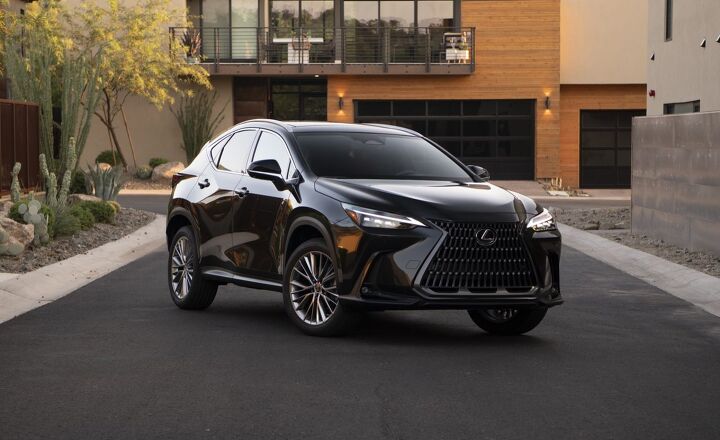


























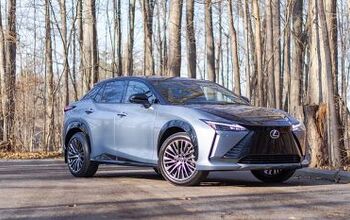



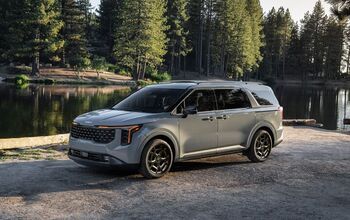


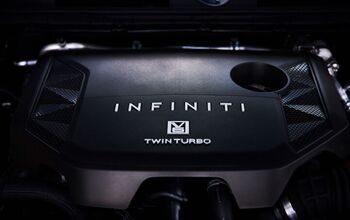

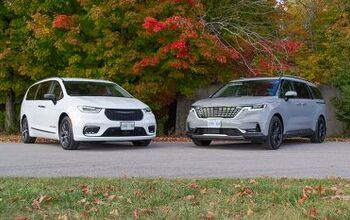

Comments
Join the conversation